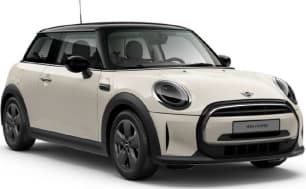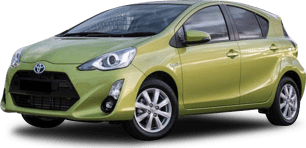From the moment you open the light yet solid front door, it’s obvious that the Mini is a different type of small car.
The frameless doors give it a hardtop feel, though it’s a shame the necessary thick B-pillar doesn’t allow for the rear windows to find down for a truly ‘60s American hardtop-style open side experience.
The Classic Plus’ standard front seats are a highlight. Superbly supportive and with extensive adjustment permutations so even taller and heftier folk can find the right position, they help create a snug yet not cramped environment, with a low, focused driving position that’s easy to get comfy behind thanks to endless column and seat adjustability. One does peer over that bulky dashtop though.
The 5.0-inch black-panel instrumentation redesign does much to reduce the old Mini tweeness inside, with motorcycle-style digitised analogue-look dials and fresh new graphics and functionality (with new ‘favourites’ shortcuts added) for the rectangular centre multimedia screen. Based on BMW’s excellent iDrive system, it’s all easy and intuitive to operate.
However, that dash is looking old and messy now, with its small letter-box screen and messy buttons, though the toggle switchgear is pleasant to operate and adds to the Mini’s sense of occasion too. The kerbside mirror won’t automatically dip in reverse, and Android Auto users aren’t accommodated like Apple CarPlay users are.
Still, storage is sufficient for most peoples’ needs as long as the things they need put away aren’t too large, backed up by a foldable armrest-cum-cubby and handy pair of big cupholders ahead of the gear lever – which is an ex-BMW design that takes a minute to get used to but works just fine.
For a three-door four-seater coupe, practicality is better than you might imagine, aided by good all-round vision and thoughtful packaging.
Access to the rear is obviously not going to be the Hatch’s easiest party trick, but a single-action lift-up latch that slides and automatically returns the front seat back to the original spot helps enormously. It’s not too much of a struggle sliding between seat and pillar as well.
Once sat out back, you’ll find a firm but inviting bench and backrest (for two), a pair of cupholders and map pockets, a trio of cupholders as well as elbow rests incorporated into the side panels. All double up as receptacles for odds and ends. Lots of glass and those upright pillars impart a surprisingly spacious feel.
Speaking of back-seat room, because it’s only a two-seater configuration, there’s a welcome amount of acreage for elbows, shoulders and bottoms, while legroom isn’t too bad for a 178cm adult sat behind themselves. There’s nothing cramped or oppressive in the Classic Plus we’re in, save perhaps for the endless black trim.
However, betraying the F56 Cooper’s age, while the front centre-armrest sited smartphone charger is accessible to rear-seat occupants, there are no USB ports of any variety or overhead lighting in this sunroof-equipped example. Nor will you find a folding centre armrest or overhead grab handles. In fact, the latter is only provided for the front-seat passenger.
Also, keep in mind that passengers cannot crack a window back there.
Further back, a can of goo in lieu of a spare wheel means the boot floor is deeper than you might imagine, with a small compartment below the second floor for added hidden storage. Beyond that, it’s an F56 Mini, so a 211L capacity and a pair of 60:40-folding backrests into the cabin as your lot luggage-capacity wise.
If you want practicality Mini offers the F55 5DR Hatch (278L) or our favourite of the lot, the lovely Clubman with 360L. Or if you don’t mind your Mini looking like a gargoyle, the Countryman extends that again to between 405L and 450L depending on rear-seat position.
























































